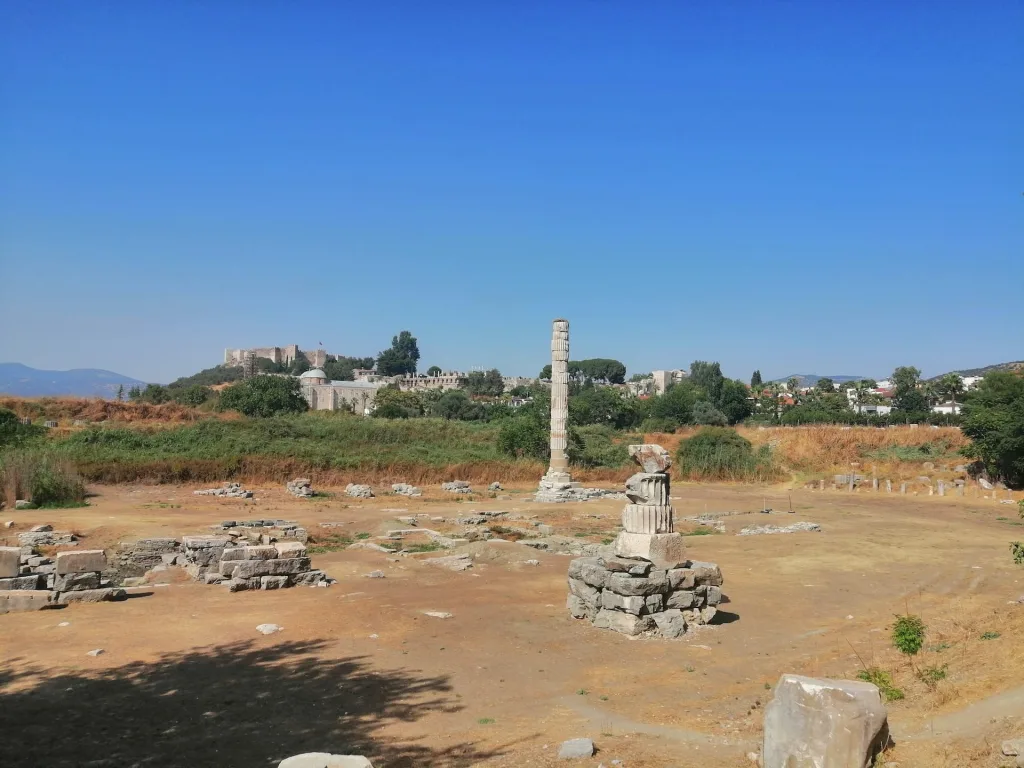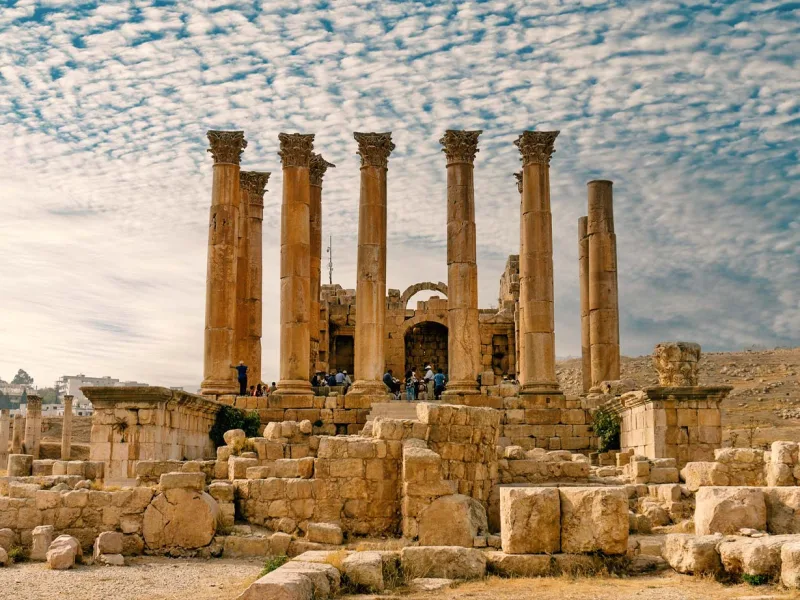The Temple of Artemis (Greek: Artemision; Latin: Artemisium) is also known as the Temple of Diana. Dedicated to the goddess Artemis, the temple was completed around 550 BCE in Ephesus. The temple was built entirely of marble. Today, only a few marble fragments remain from the temple, which was considered one of the Seven Wonders of the Ancient World. The ancient city is located in Selçuk, İzmir.
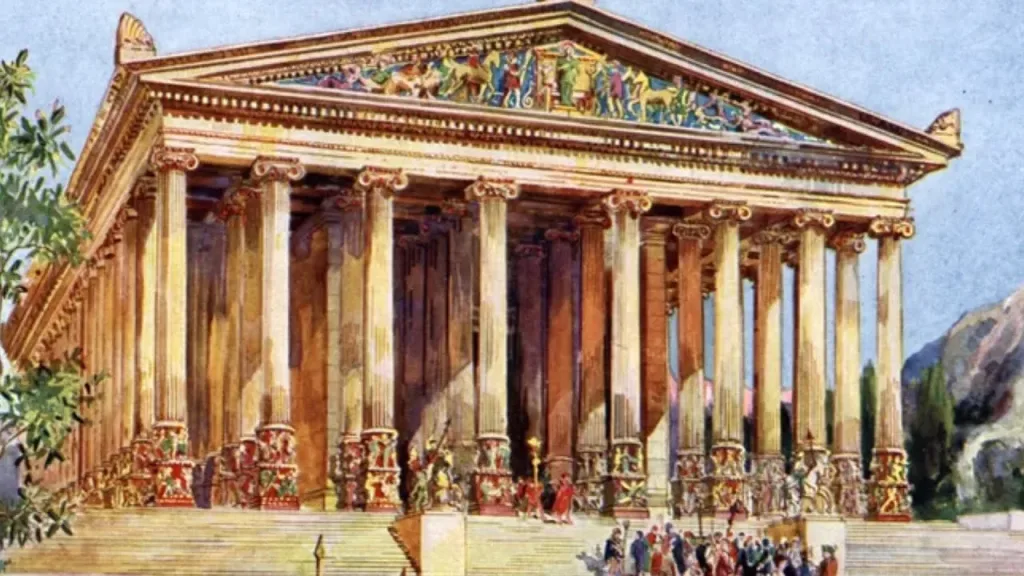
The Origins of the Temple of Artemis
The temple was the result of a 120-year project initiated by Croesus, the King of Lydia. Antipater of Sidon, who compiled the list of the Seven Wonders of the World, described the temple as follows:
“I have seen the walls of proud Babylon, which are wide enough for chariots to race upon, and the statue of Zeus by the Alpheus, and the hanging gardens, and the Colossus of the Sun, and the massive labor of the high pyramids, and the vast tomb of Mausolus; but when I saw the house of Artemis that mounted to the clouds, those other marvels lost their brilliancy, and I said: ‘Lo, apart from Olympus, the Sun never looked upon anything so grand.'”
(Antipater, Greek Anthology [IX.58])
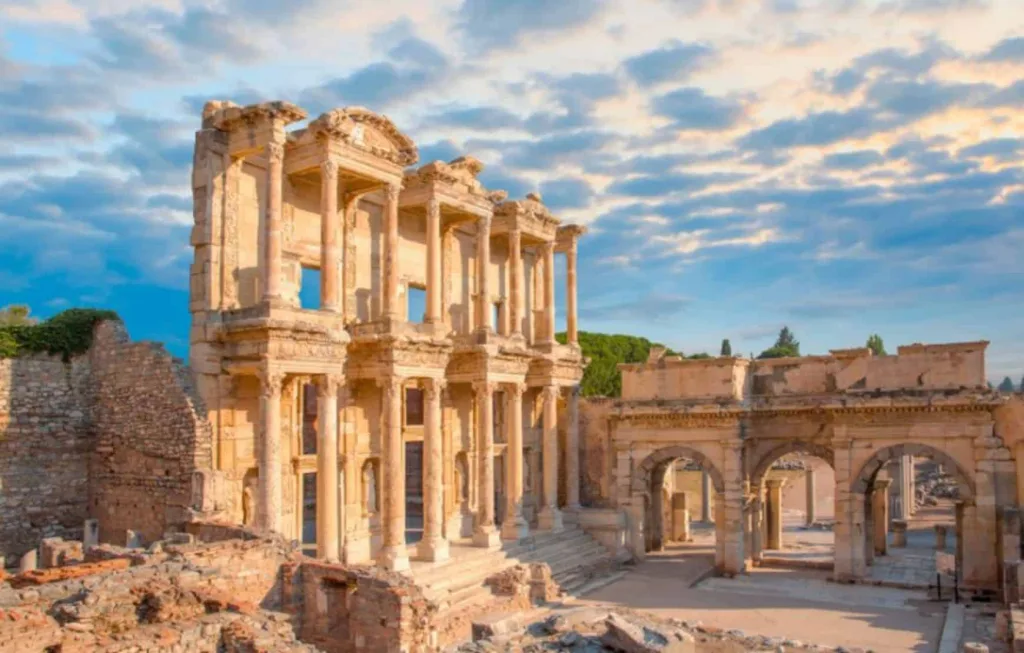
Byzantine Philon also wrote about the temple:
“I have seen the mighty workmanship of the ancient Babylonians and the tomb of Mausolus. But when I saw the temple at Ephesus rising towards the clouds, all the others were cast into shadow.”
Ephesian Artemis and Her Mythological Roots
Artemis is the virgin huntress goddess of the Greeks, sister of Apollo, and the moon goddess who replaced the Titan Selene. However, Artemis of Ephesus was quite different. It is believed that Ephesian Artemis (Ephesia) was in fact a local Anatolian goddess, a continuation or adaptation of Cybele.
Although it is unknown how the mother goddess Cybele of Anatolia arrived in Ephesus and how her cult began there under the name Artemis, it is generally accepted that Cybele gradually evolved into the form of Artemis.
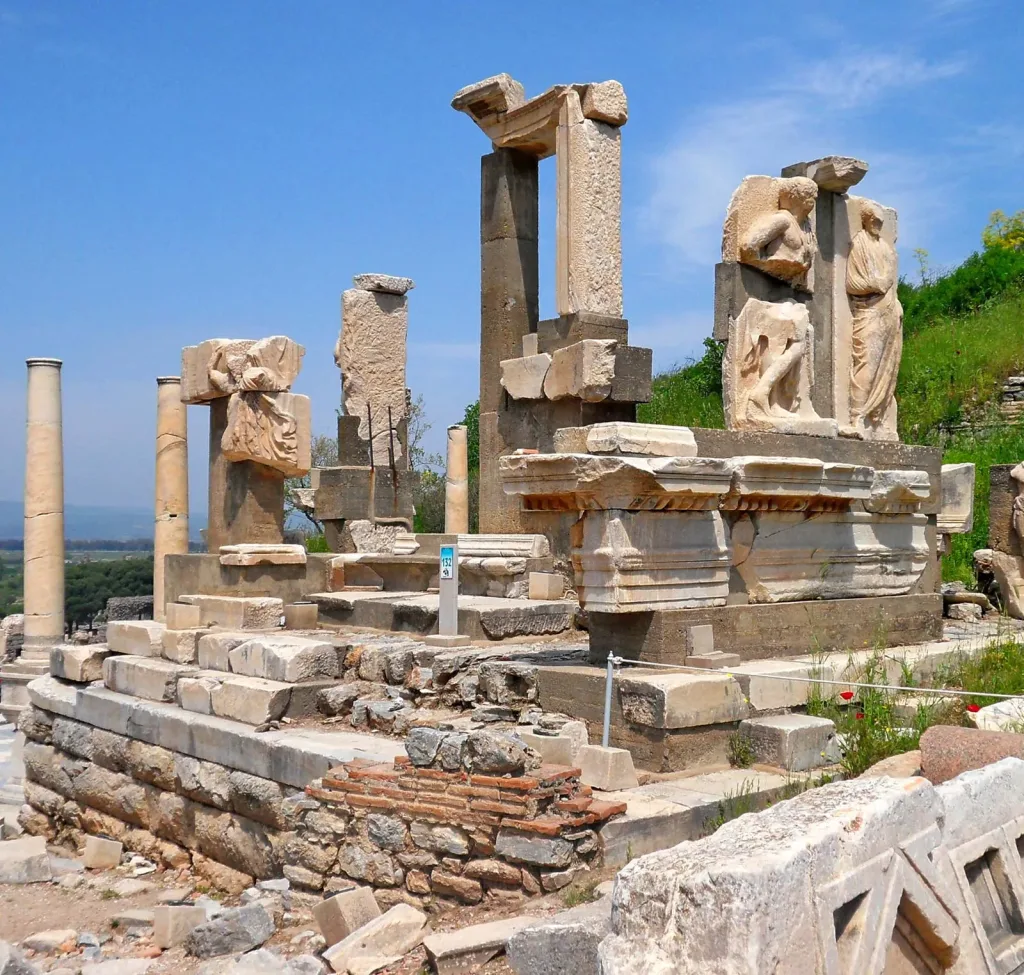
Unlike Greek gods, Ephesian Artemis had a body more reminiscent of Near Eastern and Egyptian deities. Her torso, from which her feet emerged, tapered downward and was covered in a pillar-like form. Known as the “many-breasted goddess” (37 breasts), she was depicted on coins minted in Ephesus wearing a mural crown; a feature associated with Cybele. In these depictions, she is shown leaning on a staff formed of intertwined snakes or ouroboros. Just like Cybele, she was served by hierodules and kore known as megabyzae.
A votive inscription, likely from the 3rd century BCE and mentioned by Bennett, connects Ephesian Artemis to Crete:
“To the Healer of diseases, to Apollo, Giver of Light to mortals, Eutyches has set up in votive offering (a statue of) the Cretan Lady of Ephesus, the Light-Bearer.”
In typical Greek syncretic fashion, foreign gods were assimilated into the Greek pantheon in ways understandable to them. The identification of Artemis with the “Lady of Ephesus” by Ionian settlers was clearly a superficial one.
Architecture of the Temple of Artemis
The temple is thought to have gone through three construction phases. Phase A refers to an altar from around the 7th century BCE, predating the temple and known as the Artemisium. Phase B was the temple built over this altar. Phase C refers to the reconstruction after a fire.
Descriptions of the temple’s interior and its artworks are largely based on the accounts of the historian Pliny the Elder. Pliny described the temple as nearly entirely built of marble, measuring 115 meters in length and 55 meters in width, with 127 Ionic-style columns each standing 18 meters tall.
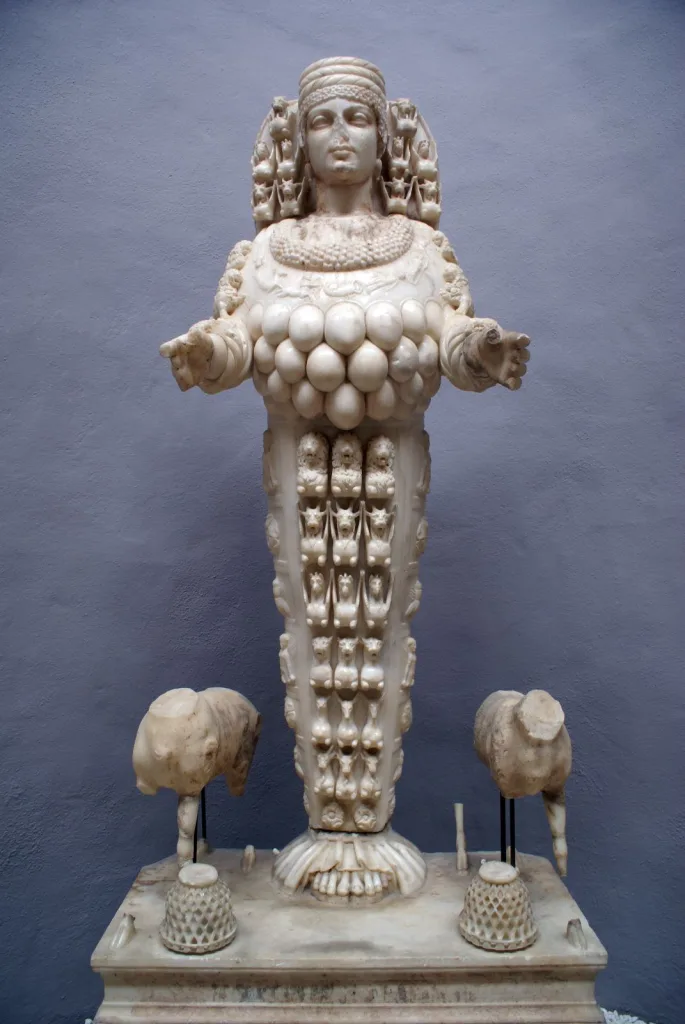
Artistic Features of the Temple
Inside the Temple of Artemis were many works of art. Statues crafted by famous Greek sculptors such as Polyclitus, Pheidias, Cresilas, and Phradmon adorned the temple, along with paintings and columns decorated with gold and silver. Artists competed with each other to create the finest statues. Most of these statues depicted Amazons, who were said to have founded the city of Ephesus.
Pliny also noted that Scopas, who worked on the Mausoleum of Mausolus, carved the reliefs on the temple’s columns.
Athenian Athenagoras identified Endoeus, a student of Daedalus, as the creator of the main statue of Artemis at Ephesus.
Temple’s Decline and Present Remains
The Temple of Artemis was located in a commercially strong region of Ephesus and was visited by merchants and travelers from across Anatolia. The temple incorporated influences from many beliefs and served as a symbol of faith for people from various religions. The Ephesians worshipped Cybele and integrated Artemis into their belief system. The cult of Artemis, distinct from the Roman Diana, took on a unique form. Thousands of worshippers from distant lands flocked to Ephesus to venerate her. All of them gathered at this place to worship her.
